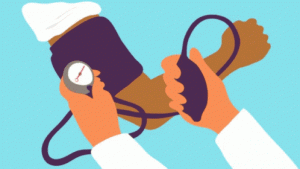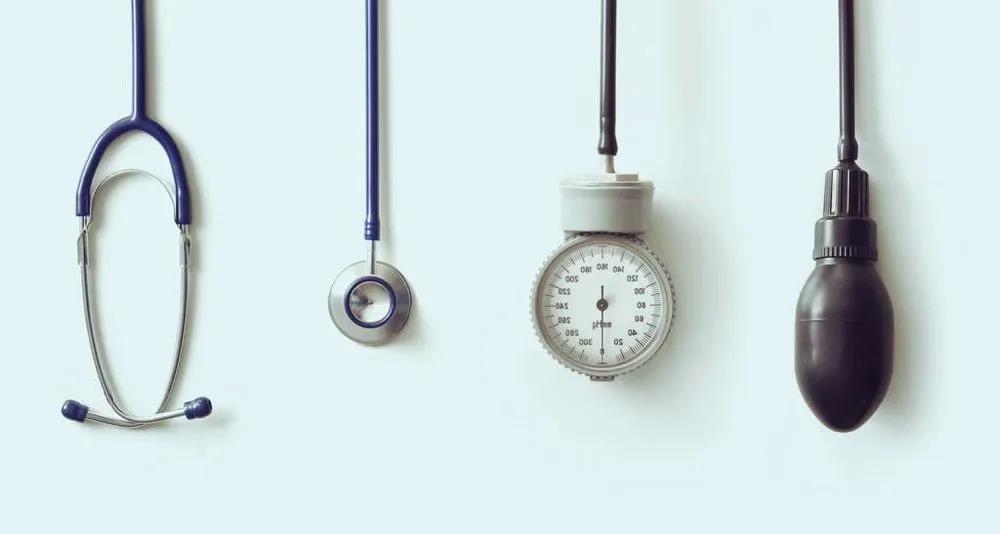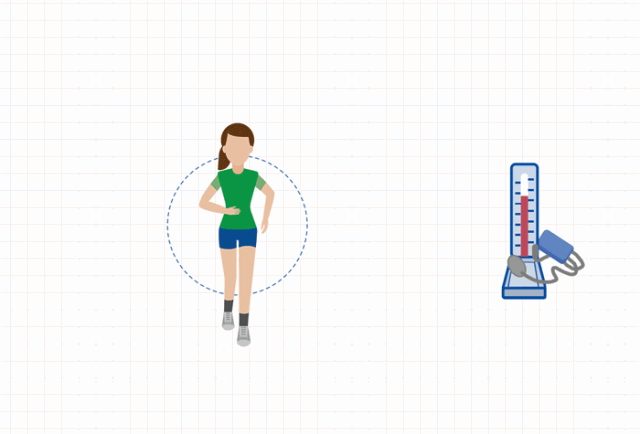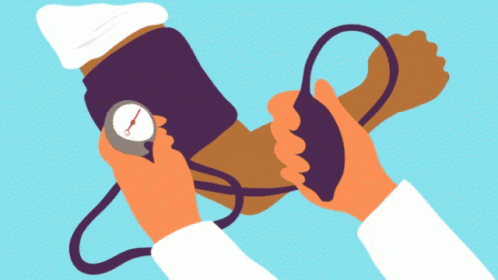
If the blood pressure is slightly high, or only a little bit higher than the critical value of “grade 1 hypertension”, the doctor is likely to suggest that you change the way to lower blood pressure.
The European Guidelines for Hypertension in 2018 pointed out that a healthy lifestyle can prevent or delay the onset of hypertension, reduce the risk of cardiovascular disease, and delay the progression of hypertension in people with high blood pressure.

Unfortunately, many people don’t know what to do to reduce blood pressure. Combining the 10 recommendations provided by the Mayo Clinic in the United States to patients with grade 1 hypertension, teach you to control your blood pressure at a stable level.
There are 3 “red lines” for high blood pressure
In general, normal blood pressure should be systolic blood pressure (ie, high pressure) <120 mmHg, and diastolic blood pressure (ie, low pressure) <80 mmHg.
Warning line
Young people blood pressure ≥120/80
For young people, blood pressure ≥120/80 mmHg is in the “warning range”. If no intervention is made, the risk of cardiovascular events will increase in the future.
Elderly blood pressure ≥140/90
The blood pressure warning line for the elderly is a little looser, more than 139/89 mmHg is potentially dangerous, and higher than 140/90 mmHg should be vigilant.
Danger line
Clinically, hypertension is divided into three stages according to blood pressure value.
Stage 1 hypertension
The high pressure is between 140 and 160 mmHg, and the low pressure is between 90 and 100 mmHg.
Stage 2 hypertension
The high pressure is between 160 and 180 mmHg, and the low pressure is between 100 and 110 mmHg.
Stage 3 hypertension
The high pressure is above 180 mmHg, and the low pressure is above 110 mmHg.
Regardless of you are young or old, as long as it is stage 2 hypertension, there is a higher risk. If it exceeds 180/110, it needs to be lowered immediately.
Danger line
When the blood pressure reaches 250/140 mmHg, it is already very dangerous, and it is easy to be complicated by cerebral hemorrhage, hypertensive encephalopathy, acute myocardial infarction and other cardiovascular and cerebrovascular emergencies. You must seek medical attention immediately.
Mayo Clinic Gives 10 “Lifestyle Methods to lower blood pressure”
For grade 1 hypertension, changing lifestyle can delay or even reduce the patient’s need for drug treatment. Recently, the Mayo Clinic in the United States provided 10 life suggestions for such patients.

1. Lose fat
Blood pressure increases with weight gain, and obesity can also cause sleep apnea, which further increases blood pressure. Studies have shown that for every kilogram of weight loss in overweight or obese people, blood pressure can be reduced by 1 mm Hg. In addition, the waist circumference should be controlled well, do not exceed 85 cm for men and within 80 cm for women.
2. Exercise every week
Doing at least 150 minutes of moderate-intensity exercise each week can lower your blood pressure by 5-8 mmHg. But if you stop exercising, your blood pressure is likely to rise again. People with high blood pressure can try some aerobic exercises, such as walking, jogging, cycling, swimming, and dancing. You can also do some high-intensity interval training when your physical condition allows.
3. Eat the right food
High blood pressure patients eat more whole grains, fruits and vegetables and low-fat dairy foods, and eat less foods rich in saturated fat and cholesterol, blood pressure can be reduced by 11 mmHg.
If you find it difficult to control your diet, you can set a weekly diet plan and ask someone around you to supervise it.
4. Eat less salt
For hypertensive patients, a slight reduction in the sodium (salt) content of the diet can reduce blood pressure by 5-6 mmHg.
It is recommended to buy low-sodium foods and beverages as much as possible, eat less processed foods with more salt, eat less takeaway and cook more for yourself.
5. Limit to alcohol
Drinking alcohol will not only increase blood pressure, but also reduce the efficacy of drugs. If you have to drink alcohol, you should choose a small amount of alcohol and choose low-alcohol, and avoid drinking liquor.
6. Quit smoking
Smoking is a major risk factor for cardiovascular diseases such as high blood pressure. Every time you smoke a cigarette, your blood pressure will rise for a few minutes.
7. Drink less coffee
The effect of caffeine on blood pressure has always been controversial. Studies have found that caffeine can increase blood pressure by 10 mmHg in some people. However, for people who drink coffee regularly, caffeine intake may have no effect on blood pressure.
If you want to know whether caffeine will increase your blood pressure, you can measure your blood pressure 30 minutes after drinking coffee. If your blood pressure increases by 5-10 mmHg, it means that caffeine has an effect on your blood pressure.
8. Reduce stress
Studies have confirmed that under long-term stress, high blood pressure will slowly torture our blood vessels. You can try to change the expected goals, turn your attention to controllable problems, avoid triggering stress, and learn to be thankful.
9. Monitor blood pressure
A sphygmomanometer should be kept in the home of hypertensive patients. It can be measured every day to help see changes in blood pressure, find problems in time, and control risk factors.
10. Supervision by family and friends
Under the supervision and encouragement of family members and friends, patients can better follow the doctor’s advice, take medication on time for review, and adhere to a healthy lifestyle.
5 steps to measure accurate blood pressure
It is particularly important to master the correct method of measuring blood pressure at home, which must pay attention to 5 points.

Step 1. Choose the right sphygmomanometer
A cuff-type sphygmomanometer is recommended. To ensure accuracy, you need to select an appropriate cuff size according to the upper arm circumference and calibrate it regularly. Make sure that the battery is sufficient before use.
Step 2. Choose the right time
The self-test blood pressure is more accurate in two periods.
Morning
When waking up, the blood pressure at this time can reflect whether the antihypertensive effect of the drugs used can last until the next morning.
2~6 hours after taking the medicine
Short-acting antihypertensive drugs usually start to exert their effect after 2 hours of taking the drug, and medium-acting and long-acting preparations are 2 to 4 hours and 3 to 6 hours later. At this time, blood pressure measurement can reflect the drug’s maximum antihypertensive effect.
Step 3. Rest for 5 minutes
Before measuring blood pressure, make sure to relax within 30 minutes, do not do strenuous exercise, do not drink alcohol, do not eat, do not drink coffee and strong tea, do not smoke.
And to empty the bladder, rest for 5 minutes, take off the clothing on one side of the measurement, take the sitting or lying position, keep the elbow and the heart at the same level.
Step 4. Tight the cuff properly
When measuring, straighten and relax the arm and abduct 45 degrees with the palm up; first evacuate the gas in the cuff of the sphygmomanometer, and then tie it to the upper arm evenly. Note that the cuff should directly touch the upper arm skin, and the elasticity is appropriate (it can be plugged). Insert 1~2 fingers); the cuff should be tied 2 cm above the elbow fossa, and the middle of the air bag should face the brachial artery of the elbow fossa. Avoid coughing and upper arm movements during the measurement.
Step 5. Multiple measurements
After the first blood pressure measurement, the cuff of the sphygmomanometer should be fully deflated, wait at least 1 minute and then repeat the measurement again, and take the average of the two times; when the blood pressure values of the left and right hands differ by more than 10 mmHg, the higher value should be used. Numerical value.
Tip: If the blood pressure still fails to reach a satisfactory level after six months of changing your lifestyle, it is recommended to consult a cardiologist for medical treatment.
Comments